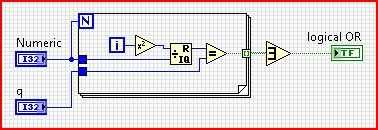22
2
Given two inputs q n determine if q is a quadratic residue of n.
That is, is there an x where x**2 == q (mod n) or is q a square mod n?
Input
Two integers q and n, where q and n are any integers 0 <= q < n.
Output
A truthy or a falsey.
Optionally, print any (or all) x that is x**2 == q (mod n)
Examples
>>> quadratic_residue(1, 5)
True
>>> quadratic_residue(3, 8)
False
>>> quadratic_residue(15, 22)
True
Rules
Your code must be a program or a function. The inputs can be in any order. This is code golf, so shortest code in bytes wins.
If anything is unclear or otherwise needs fixing, please let me know.
Bonuses
- 2-byte bonus if your function accepts
qas any arbitrary integer.
Catalogue
var QUESTION_ID=65329;var ANSWER_FILTER="!t)IWYnsLAZle2tQ3KqrVveCRJfxcRLe";var COMMENT_FILTER="!)Q2B_A2kjfAiU78X(md6BoYk";var OVERRIDE_USER=47581;var answers=[],answers_hash,answer_ids,answer_page=1,more_answers=true,comment_page;function answersUrl(index){return"http://api.stackexchange.com/2.2/questions/"+QUESTION_ID+"/answers?page="+index+"&pagesize=100&order=desc&sort=creation&site=codegolf&filter="+ANSWER_FILTER}function commentUrl(index,answers){return"http://api.stackexchange.com/2.2/answers/"+answers.join(';')+"/comments?page="+index+"&pagesize=100&order=desc&sort=creation&site=codegolf&filter="+COMMENT_FILTER}function getAnswers(){jQuery.ajax({url:answersUrl(answer_page++),method:"get",dataType:"jsonp",crossDomain:true,success:function(data){answers.push.apply(answers,data.items);answers_hash=[];answer_ids=[];data.items.forEach(function(a){a.comments=[];var id=+a.share_link.match(/\d+/);answer_ids.push(id);answers_hash[id]=a});if(!data.has_more)more_answers=false;comment_page=1;getComments()}})}function getComments(){jQuery.ajax({url:commentUrl(comment_page++,answer_ids),method:"get",dataType:"jsonp",crossDomain:true,success:function(data){data.items.forEach(function(c){if(c.owner.user_id===OVERRIDE_USER)answers_hash[c.post_id].comments.push(c)});if(data.has_more)getComments();else if(more_answers)getAnswers();else process()}})}getAnswers();var SCORE_REG=/<h\d>\s*([^\n,<]*(?:<(?:[^\n>]*>[^\n<]*<\/[^\n>]*>)[^\n,<]*)*),.*?(\d+)(?=[^\n\d<>]*(?:<(?:s>[^\n<>]*<\/s>|[^\n<>]+>)[^\n\d<>]*)*<\/h\d>)/;var OVERRIDE_REG=/^Override\s*header:\s*/i;function getAuthorName(a){return a.owner.display_name}function process(){var valid=[];answers.forEach(function(a){var body=a.body;a.comments.forEach(function(c){if(OVERRIDE_REG.test(c.body))body='<h1>'+c.body.replace(OVERRIDE_REG,'')+'</h1>'});var match=body.match(SCORE_REG);if(match)valid.push({user:getAuthorName(a),size:+match[2],language:match[1],link:a.share_link,});else console.log(body)});valid.sort(function(a,b){var aB=a.size,bB=b.size;return aB-bB});var languages={};var place=1;var lastSize=null;var lastPlace=1;valid.forEach(function(a){if(a.size!=lastSize)lastPlace=place;lastSize=a.size;++place;var answer=jQuery("#answer-template").html();answer=answer.replace("{{PLACE}}",lastPlace+".").replace("{{NAME}}",a.user).replace("{{LANGUAGE}}",a.language).replace("{{SIZE}}",a.size).replace("{{LINK}}",a.link);answer=jQuery(answer);jQuery("#answers").append(answer);var lang=a.language;lang=jQuery('<a>'+lang+'</a>').text();languages[lang]=languages[lang]||{lang:a.language,lang_raw:lang.toLowerCase(),user:a.user,size:a.size,link:a.link}});var langs=[];for(var lang in languages)if(languages.hasOwnProperty(lang))langs.push(languages[lang]);langs.sort(function(a,b){if(a.lang_raw>b.lang_raw)return 1;if(a.lang_raw<b.lang_raw)return-1;return 0});for(var i=0;i<langs.length;++i){var language=jQuery("#language-template").html();var lang=langs[i];language=language.replace("{{LANGUAGE}}",lang.lang).replace("{{NAME}}",lang.user).replace("{{SIZE}}",lang.size).replace("{{LINK}}",lang.link);language=jQuery(language);jQuery("#languages").append(language)}}body{text-align:left!important}#answer-list{padding:10px;width:290px;float:left}#language-list{padding:10px;width:290px;float:left}table thead{font-weight:700}table td{padding:5px}<script src="https://ajax.googleapis.com/ajax/libs/jquery/2.1.1/jquery.min.js"></script> <link rel="stylesheet" type="text/css" href="//cdn.sstatic.net/codegolf/all.css?v=83c949450c8b"> <div id="language-list"> <h2>Shortest Solution by Language</h2> <table class="language-list"> <thead> <tr><td>Language</td><td>User</td><td>Score</td></tr> </thead> <tbody id="languages"> </tbody> </table> </div> <div id="answer-list"> <h2>Leaderboard</h2> <table class="answer-list"> <thead> <tr><td></td><td>Author</td><td>Language</td><td>Size</td></tr> </thead> <tbody id="answers"> </tbody> </table> </div> <table style="display: none"> <tbody id="answer-template"> <tr><td>{{PLACE}}</td><td>{{NAME}}</td><td>{{LANGUAGE}}</td><td>{{SIZE}}</td><td><a href="{{LINK}}">Link</a></td></tr> </tbody> </table> <table style="display: none"> <tbody id="language-template"> <tr><td>{{LANGUAGE}}</td><td>{{NAME}}</td><td>{{SIZE}}</td><td><a href="{{LINK}}">Link</a></td></tr> </tbody> </table>

5Some existing answers are assuming that
0 <= q < n. You should probably clarify whether or not this is an acceptable assumption. – Peter Taylor – 2015-11-30T14:52:24.4631I would have liked
qandnto be any two integers, but so I don't break existing answers,0 <= q < n– Sherlock9 – 2015-11-30T15:23:49.0532In this case I would have considered it reasonable to "break" the existing answers on the grounds that they weren't following the existing spec and you were just clarifying that it meant what it said rather than changing it, but it's too late now. – Peter Taylor – 2015-11-30T16:17:26.683
You could give a small bonus for solutions accepting arbitrary
q– Bakuriu – 2015-12-02T17:41:32.840